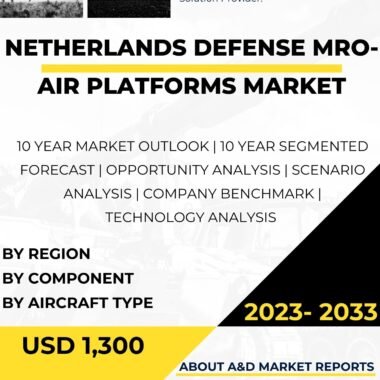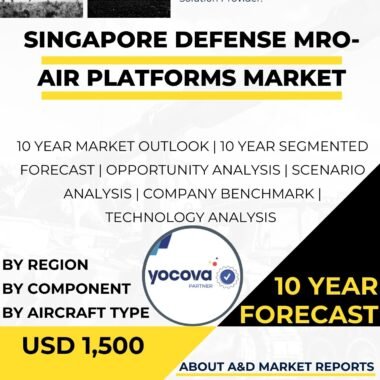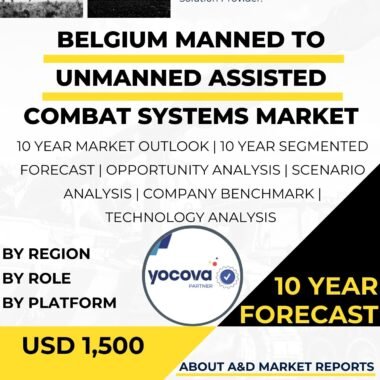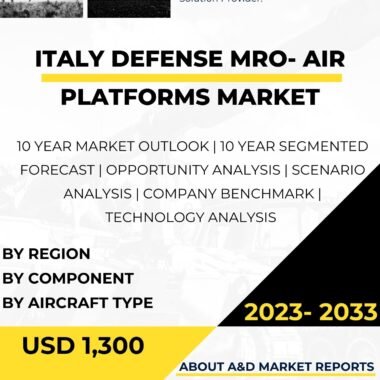Description
The United States Global Manned to Unmanned Assisted Combat Systems Market represents a revolutionary paradigm shift in modern warfare, combining the strengths of human operators with the capabilities of unmanned systems. This market encompasses a wide range of technologies, platforms, and strategies aimed at augmenting the combat effectiveness of manned military assets, such as fighter jets, ground vehicles, and naval vessels, through the integration of unmanned elements. The United States, as a dominant force in military innovation and technology, plays a central role in the development, deployment, and proliferation of these advanced systems, reshaping the landscape of modern warfare.
Manned to Unmanned Assisted Combat Systems, often referred to as MUMACS, are engineered to enhance the capabilities of human-operated military platforms. These systems leverage cutting-edge technologies, including artificial intelligence, autonomous navigation, remote sensing, and advanced communication networks, to facilitate more effective and efficient military operations across various domains—land, air, sea, and cyberspace.
A driving force behind the United States’ leadership in the global MUMACS market is its unwavering commitment to military innovation and technological superiority. The nation’s substantial defense budget supports extensive research and development efforts that have yielded groundbreaking advancements in unmanned systems and their integration with manned assets. This synergy allows for a more versatile, agile, and potent military force, capable of addressing emerging threats and evolving security challenges.
Furthermore, the United States actively collaborates with its international allies and partners to share its expertise and jointly develop MUMACS solutions. This collaborative approach extends the influence of American-made technology and fosters interoperability among allied forces. As nations around the world recognize the operational advantages and security benefits of MUMACS, this technology becomes an integral part of multinational defense efforts.
The growing demand for MUMACS on a global scale reflects the changing nature of modern warfare. Nations recognize the need to adapt to increasingly complex, multifaceted, and asymmetric threats. MUMACS offer a transformative solution by enabling military platforms to operate more effectively in dynamic and contested environments while minimizing human risk. These systems provide enhanced situational awareness, precision, and flexibility, giving commanders a competitive edge in various operational scenarios.
MUMACS have a prominent role in improving military logistics and sustainment. Unmanned aerial vehicles (UAVs), for instance, can deliver supplies, conduct reconnaissance, and perform resupply missions, reducing the logistical burden on manned forces and extending their operational reach. In addition, unmanned ground vehicles (UGVs) play a critical role in tasks like mine clearance, explosive ordnance disposal, and remote surveillance, safeguarding human operators from potentially life-threatening situations.
Another key aspect of the MUMACS market is the integration of artificial intelligence (AI) and machine learning. These technologies enable autonomous decision-making and adaptive responses in complex and dynamic combat environments. AI-driven systems can process vast amounts of data, identify patterns, and make split-second decisions, enhancing the speed and precision of military operations.
Moreover, MUMACS contribute to reducing the human element’s physical and cognitive burden during high-stress combat situations. Remote operators can manage multiple unmanned systems simultaneously, distribute workloads, and make tactical decisions with greater clarity and efficiency. This human-machine collaboration optimizes mission success rates and minimizes the potential for human error.
As the United States Global Manned to Unmanned Assisted Combat Systems Market continues to evolve, it remains at the forefront of military innovation. Ongoing research and development efforts focus on improving the integration of manned and unmanned assets, enhancing AI capabilities, and expanding the scope of MUMACS applications. The rapid advancements in technology ensure that MUMACS will continue to be a vital component of modern military strategies, providing militaries worldwide with adaptable and agile solutions to navigate the complexities of contemporary security challenges.




